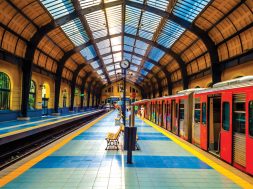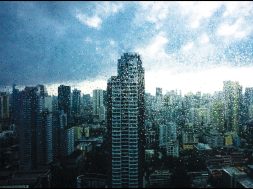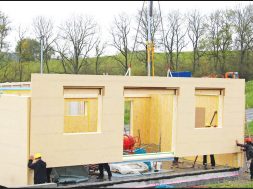Architecture is more than designing for incredibly wealthy
“The idea that architecture should reach forgotten programs and addiction recovery centres is somewhat new,” says Architect Vibhor Mukul Singh
Architects see the world different than most. They are trained to heighten their awareness and raise their sensual aptitudes. They see the world through a lens of optimism and opportunity, ambition and aesthetics. Architects aspire to eradicate problems, enhance culture and expedite change through the built environment. In an exclusive interview with ACE Update, Architect Vibhor Mukul Singh, Principal Architect, Designers’ Alcove for Art and Architecture, shares why architects are hopeless visionaries – often self-obsessed and self-driven to extract the marrow out of themselves, their relationships and their families – all for the work.
Journey in the field of architecture After graduation, a tremendous opportunity to work for a leading design firm arose and my trajectory towards becoming the next great architect seemed inevitable. I was privileged to work on three high-profile and highly designed homes on fantastic sites in India and Europe.
Imagine working for two and a half years without time constraints, budgetary restrictions or aesthetic limits. Every project presented another opportunity to be published in a number of international publications. However, after angry client phone calls, devastating design changes and countless iteration, I realized that there must be more to this great profession.
Architecture must be more than designing for the incredibly wealthy and building houses that may only ever be experienced by two people.
Challenges faced The 7 and half years I spent in practice taught me many things that apply to my life and architecture.
First, the goal of this life is not to serve you but to serve others. We may do this by volunteering, blogging or building architecture. In any case, when we align our talents with serving others, our lives become meaningful.
Second, the noble task of undertaking work for churches, non-profits or other cultural institutions is not easy. In fact, it is far more challenging to meet the incredibly tight budgets, schedules and client demands with very little resources. I have found that these constraints yield unforeseen solutions and unpredicted creativity.
Third, the exasperating process of contributing to public work is exhausting, often demoralising. The notion of doing architecture for the other 98 per cent is not always as romantic as one might imagine. One must keep in mind that the unique reward for buildings that serve and engage communities: the tremendous sense of purpose and profound meaning one experience.
Design philosophy While a rigorous theoretical argument was developed over a period of years, theory is rarely the starting point of a project. It is rather the general framework. We, at Designers’ Alcove, believe that practice can recede theory, much as theory can precede practice.
We engage in creating planning strategies and design solutions for the urban and architectural challenges posed at the interface of the 21st century, while also carrying out extensive research and inventing sustainable methodologies to build a positive living environment. From innovation in contextual design to the use of symbolism and iconography, we work to expand the concepts of what urban architecture and infrastructural planning can be, locally and globally.
Our functional philosophies are based on ethics deeply rooted in social planning, contextual design, and environmental responsibility to offer design solutions that are not only specific but also sensitive, thoughtful, and humane. Healthy ecosystems and environment provide vital goods and services to humans and other organisms, and we constantly look out for its integration in our designs by all means.
We design what the occupants engage with as they travel through space. As each person absorbs the information that is put out, we believe we are having an effect upon them stirring them to move, feel, behave and think. The composition that our designs take on have both, individual and cumulative effects, and we try to use timing as a variable to further fine tune the communication. Our works express human values, feelings and dynamic states. We derive meaning from these works based upon our perceptions of the sensory, formal and technical properties of our work and from our own experiences. We search for the mood or metaphor expressed by design. We try to use our expressive elements to give a structure the appearance of having a mood, emotional state, character, or dynamic qualities.
Remarkable achievementsEver since our firm came into existence, there are several architecture, master planning and interior design projects that have been accomplished. But two of them that really stand out, to the extent that I would call them our hallmark, are Abu Dhabi Ladies Club (ADLC) in Abu Dhabi and the Al Qasim Green University in Baghdad.
In ADLC, the free-flowing forms of the building, the curved walls, the indented entrances and the flamboyantly styled canopy are all unique features of the building and add tremendously to the value of the project. The building merges effortlessly with the surrounding landscape in a natural fashion and takes the visitors by breathe as they become a part of it.
The Low Cost Social Housing Scheme for Karuna Pragya Foundation is an attempt to create a quality living environment for that section of our society which has limited purchasing power, and its concept is primarily driven by the intention of uplifting the living standards of the occupants by using extensive design and planning tools. We all know that in most cases, low-cost housings turn out to be just a readjustment of what has already been a part of these people’s lives. So we have tried to create spaces with different qualities which were usually not considered a part of such schemes for whatever reasons. We believe that the quality of a space is not a function of economic parameters but socio-political parameters. Several aspects of passive design strategies were investigated that played a major role in the overall form of the clusters and it’s staggering. It is a highly sustainable housing with several active and passive means of energy harvesting solutions implemented. We have tried to create spaces that not only strengthen the social networking of the occupants, but also uplift their domestic lifestyle, their health and hygiene conditions, and their source of livelihood. Future outlookArchitects are some of the world’s most gifted, creative individuals. Unfortunately, they are also marred with reputations of arrogance and self-entitlement. Recent trends set in place by public oriented practices such as the Rural Studio, Design Corps and Architecture for Humanity are overt attempts for architecture to contribute to society. However, the simple notion that architecture must serve the citizens, communities and neighbourhoods in which it resides must permeate our entire design culture.
The idea that architecture should reach forgotten programs such as homeless shelters, mental institutions, supportive housing and addiction recovery centres is somewhat new. Related efforts are nascent in their development. We must ask each professional, each practice and each building how it contributes to the existing built environment and creates an enhanced sense of place.
If our profession can seek to serve the communities in which we build instead of subscribing to an antiquated self-serving profession, we will see a monumental shift in our collective value system and our work will shape the built environment like never before.
16
Cookie Consent
We use cookies to personalize your experience. By continuing to visit this website you agree to our Terms & Conditions, Privacy Policy and Cookie Policy.









